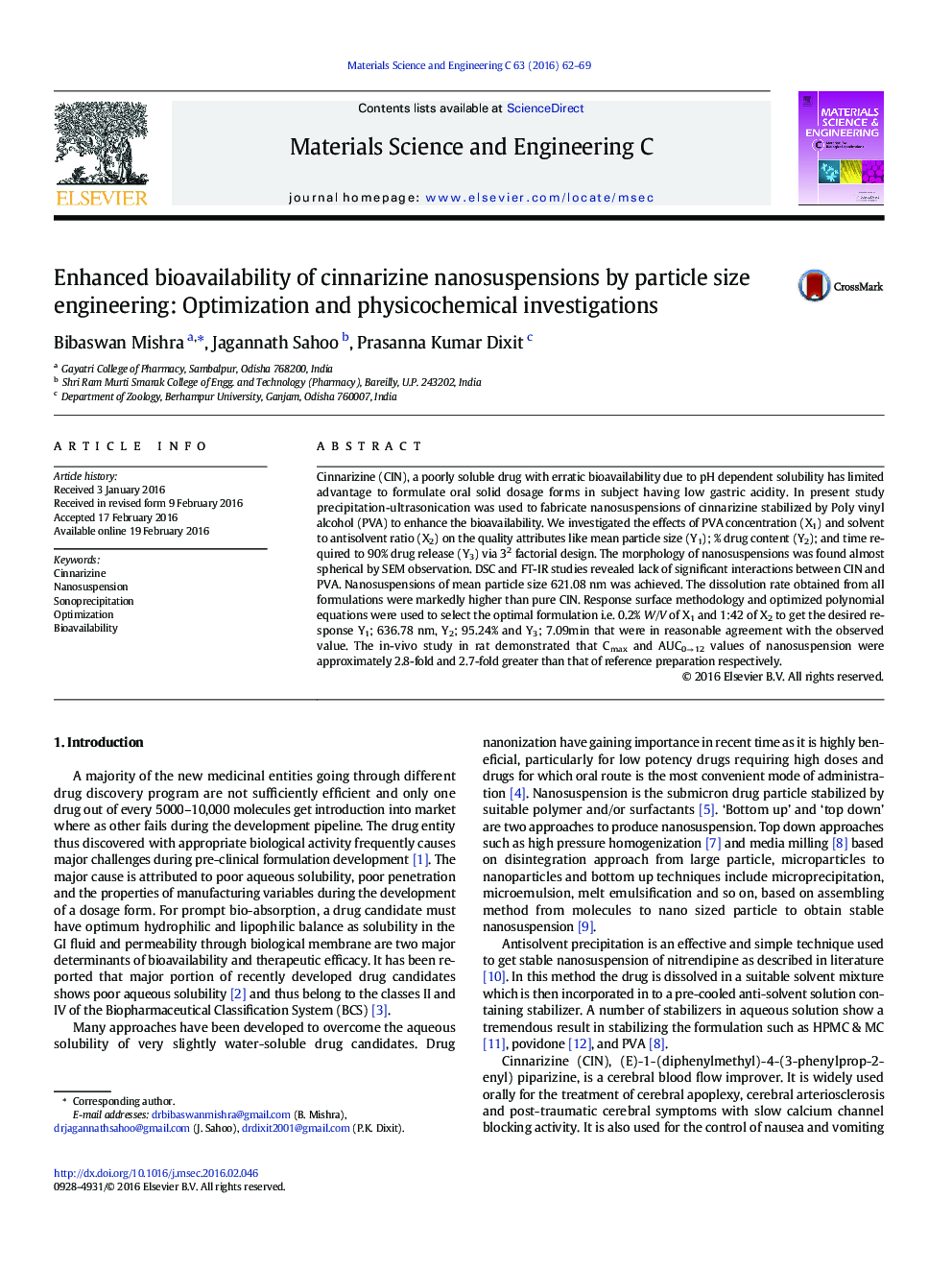| Article ID | Journal | Published Year | Pages | File Type |
|---|---|---|---|---|
| 1427994 | Materials Science and Engineering: C | 2016 | 8 Pages |
•Particle size engineering of cinnarizine was done by sonoprecipitation technology.•Response surface methodology have adopted for formulation optimization.•PVA stabilized nanoparticle was obtained with reasonable physicochemical properties.•Enhanced dissolution rate and oral bioavailability in rat was achieved.
Cinnarizine (CIN), a poorly soluble drug with erratic bioavailability due to pH dependent solubility has limited advantage to formulate oral solid dosage forms in subject having low gastric acidity. In present study precipitation-ultrasonication was used to fabricate nanosuspensions of cinnarizine stabilized by Poly vinyl alcohol (PVA) to enhance the bioavailability. We investigated the effects of PVA concentration (X1) and solvent to antisolvent ratio (X2) on the quality attributes like mean particle size (Y1); % drug content (Y2); and time required to 90% drug release (Y3) via 32 factorial design. The morphology of nanosuspensions was found almost spherical by SEM observation. DSC and FT-IR studies revealed lack of significant interactions between CIN and PVA. Nanosuspensions of mean particle size 621.08 nm was achieved. The dissolution rate obtained from all formulations were markedly higher than pure CIN. Response surface methodology and optimized polynomial equations were used to select the optimal formulation i.e. 0.2% W/V of X1 and 1:42 of X2 to get the desired response Y1; 636.78 nm, Y2; 95.24% and Y3; 7.09min that were in reasonable agreement with the observed value. The in-vivo study in rat demonstrated that Cmax and AUC0→12 values of nanosuspension were approximately 2.8-fold and 2.7-fold greater than that of reference preparation respectively.
Graphical abstractFigure optionsDownload full-size imageDownload as PowerPoint slide
